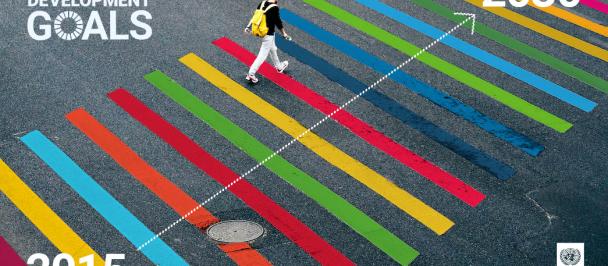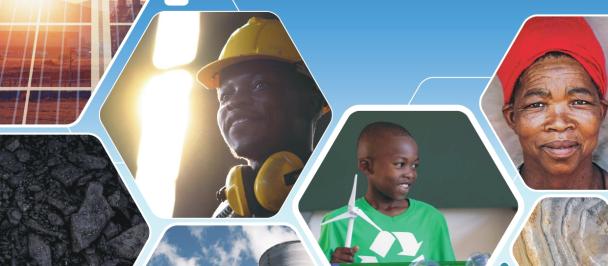The United Nations Development Program (UNDP) is committed to youth empowerment, a mission that is championed broadly by the United Nations (UN) and all its agencies. In the context of youth – education, employment and environment – are three of the fifteen fields of action that are considered priority areas by the UN and the international community. While youth empowerment is a global endeavour, the challenges faced by youth in South Africa prevail. As identified by the South African Government, there are several ongoing challenges relating to youth that need immediate action to unleash the full potential of youth in achieving prosperity. These challenges include access to quality of education, job creation, and livelihood opportunities, that are hindering the contribution of youth in shaping a thriving and sustainable future for South Africa.
The observation of the UN International Youth Day on 12 August encourages the acknowledgment of the aforementioned issues and the creation of potential solutions. The UNDP maintains an active involvement in devising opportunities for the youth that not only empower them with skills and employment, but also achieves the concurrent goal of promoting an environmentally sustainable economy for the nation too. This year’s international Youth Day is celebrated under the theme “Youth Innovation for Human and Planetary Health”, as such underpinning the criticality of meaningful participation of young people in climate action, environmental governance and in the economy.
UNDP and its partners have been supporting the Government of South Africa through empowerment initiatives that create new opportunities to address the triple challenge of poverty, income inequality, and unemployment. These interventions promote better governance, inclusive growth, energy access, climate resilience, and sustainable development. Some examples are the recent collaboration with the National Youth Development Agency (NYDA) aimed to intensify efforts to reduce youth unemployment, the Technical Vocational Education and Training project to upskill youth with skills relevant to the automotive industry, the and implementation of a Digital Climate, Robotics and STEM project for high-school learners aimed at addressing issues related to climate-related Sustainable Development Goals. Below is an example of an UNDP-led youth intervention in a green sector, namely in the wind energy sector.
The future of wind energy – experiences from young wind energy technicians
The South African Wind Energy Programme (SAWEP) Phase two is a UNDP-supported multi-year technical assistance project promoting the large-scale commercialisation of wind energy, implemented by the Department of Mineral Resources and Energy (DMRE) in close collaboration with the South African National Energy Development Institute (SANEDI) and a range of other partners. Since its inception in 2016 the project has supported policy development and implementation, as well as real impact on the ground in the space of wind energy development in the country.
The South Africa energy sector largely constitutes of fossil fuels (mainly coal) which has led to country being top 14 greenhouse gas emitter in the world, and the country is also faced by capacity and supply constraints (mitigated by the so-called load shedding). Even if South Africa has amongst the highest rate of energy access in Sub-Saharan Africa, 9% of the population still remain without access reliable, affordable and sustainable energy – a gap which the SDG 7 goal aims to close by 2030. South Africa is a prime country for renewable energy, especially from solar and wind resources. At the same time, the coal sector employs a large number of people. Therefore, a transition to a low-carbon society with increased use of renewable energy must be just and inclusive, with employment and training opportunities at the core of any strategy, which is recognised by the UNDP and embedded in South Africa’s development priorities. It is therefore key to support education, training and skilling opportunities in renewable energy, a mission which UNDP and its partners have been championing under SAWEP.
In empowering youth in the green economy in South Africa – in the wind energy sector - UNDP has teamed up with the South African Renewable Energy Technology Centre (SARETEC), a specialised wind training facility under the Department of Higher Education & Training (DHET), residing at the Cape Peninsula University of Technology (CPUT). This support has led to a first cohort of internationally accredited Wind Turbine Energy Technicians (WTST) consisting of 24 young graduates (40% women) from around the country successfully trained through a seven-months accredited programme and absorbed by the South African wind energy market. The WTST qualification is a globally sought-after skill which trains a highly specialised technician to be able to work on a wind turbine undertaking construction, commissioning, maintenance, service, fault-finding and repairs.
“This support has definitely made a long-term impact in South Africa in terms of the delivery of much needed local technicians for employment in the South African Wind industry as well as the empowerment of individuals to make them marketable for employment and thus contributing towards the ongoing fight against unemployment. The biggest impact is arguably the contribution to reduce South Africa’s ongoing energy constraints as well as combatting Global Warming, said Henk Volschenk, SARETEC Training Supervisor.”
We interviewed three of the fantastic wind energy technicians, to learn more about their views of the wind technician field and wind energy sector:
What made you choose to become a wind technician, and what is the best thing about being a wind technician?
“When I visited a wind farm in Molteno, I had an interest in the challenges wind technician face, challenges of working at 100 feet in the air, facing not only electrical challenges but also mechanical, hydraulics and computer skills. As someone who likes challenging herself those challenges appeared joyful to me.“ - Pumeza Tshomela
“At first I was having little information but I wanted to be a part of a big change in energy producing, when I started the training I knew this is where I want to be, the best thing is I am proudly to be one of the female wind technicians.” - Bongiwe Mthethwa
What do you think about the future for renewable energy in South Africa?
“The future is very bright, renewable produce clean energy which is good for environment and it is a solution for energy that is needed in our daily bases.” - Bongiwe Mthethwa
“The future of renewable energy in South Africa is yet to grow and become the most valued source of energy and provide an income in many households.” - Pumeza Tshomela
What advice would you give to other young people that would like to work in the sustainable energy space?
“Work hard and if you planning to go into the wind industry you won't go wrong because it's the future.” - Azra Witbooi
“Sustainable energy is growing fast in our country, if you are a person that's not afraid of heights, challenges and have interest in technical skills this is a career for you.” - Pumeza Tshomela
With more countries, companies, organisations and households turning to renewable energy options as a way to both ensure a reliable and affordable energy supply, and to adhere to necessary climate mitigation action, there is no doubt that the future of wind energy is bright. The Wind Atlas for South Africa (WASA), developed under SAWEP has helped the identification of Renewable Energy Development Zones in South Africa, which in turn supports the implementation of the Integrated Resource Plan 2019 which plans for at least 14.4 GW of new wind and 6 GW of new solar PV capacity by 2030 for South Africa to meet national and international climate targets and net-zero emissions by 2050 as per South Africa’s Low-Emissions Development Strategy.
It is estimated that South Africa will have to train around 1,700 wind technicians over the next years to meet the increasing demand for workers as per South Africa’s current commitments to renewable energy. As the UNDP we are proud to have been working with a great institution like SARETEC under SAWEP, which makes it possible for young aspiring South African’s to create a long-lasting career in a bright green sector, and to share this experience with their families, communities and peers. Institutions like SARETEC are also key in supplying the increasing need of wind energy technicians, and thereby enabling the transition to a sustainable and climate resilient future. Not only in South Africa, but with the opportunity to share knowledge to the continent and the Global South.
Article written by Tove Nordberg, Ntokozo Mahlangu and Char Deslandes, UNDP

 Locations
Locations




